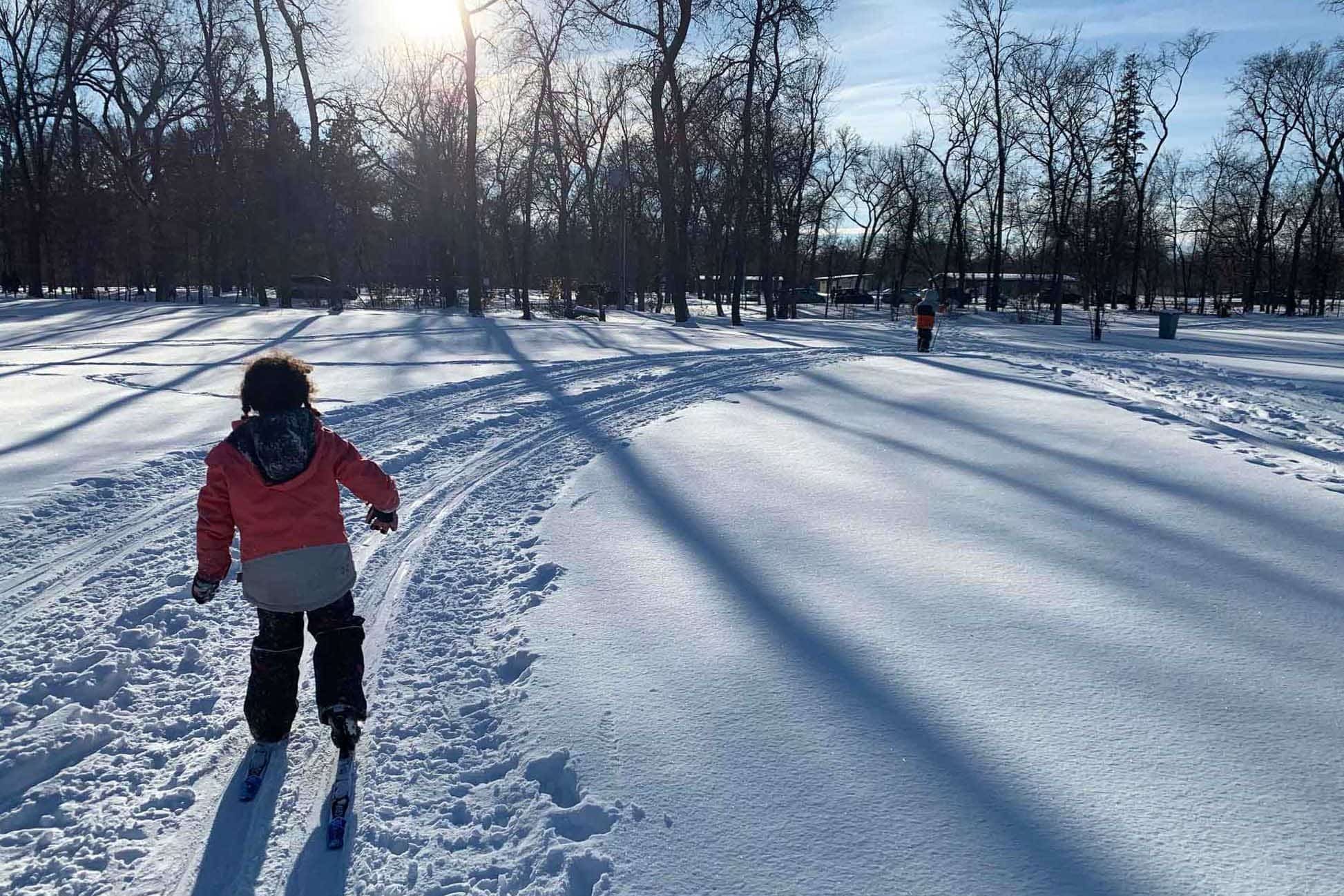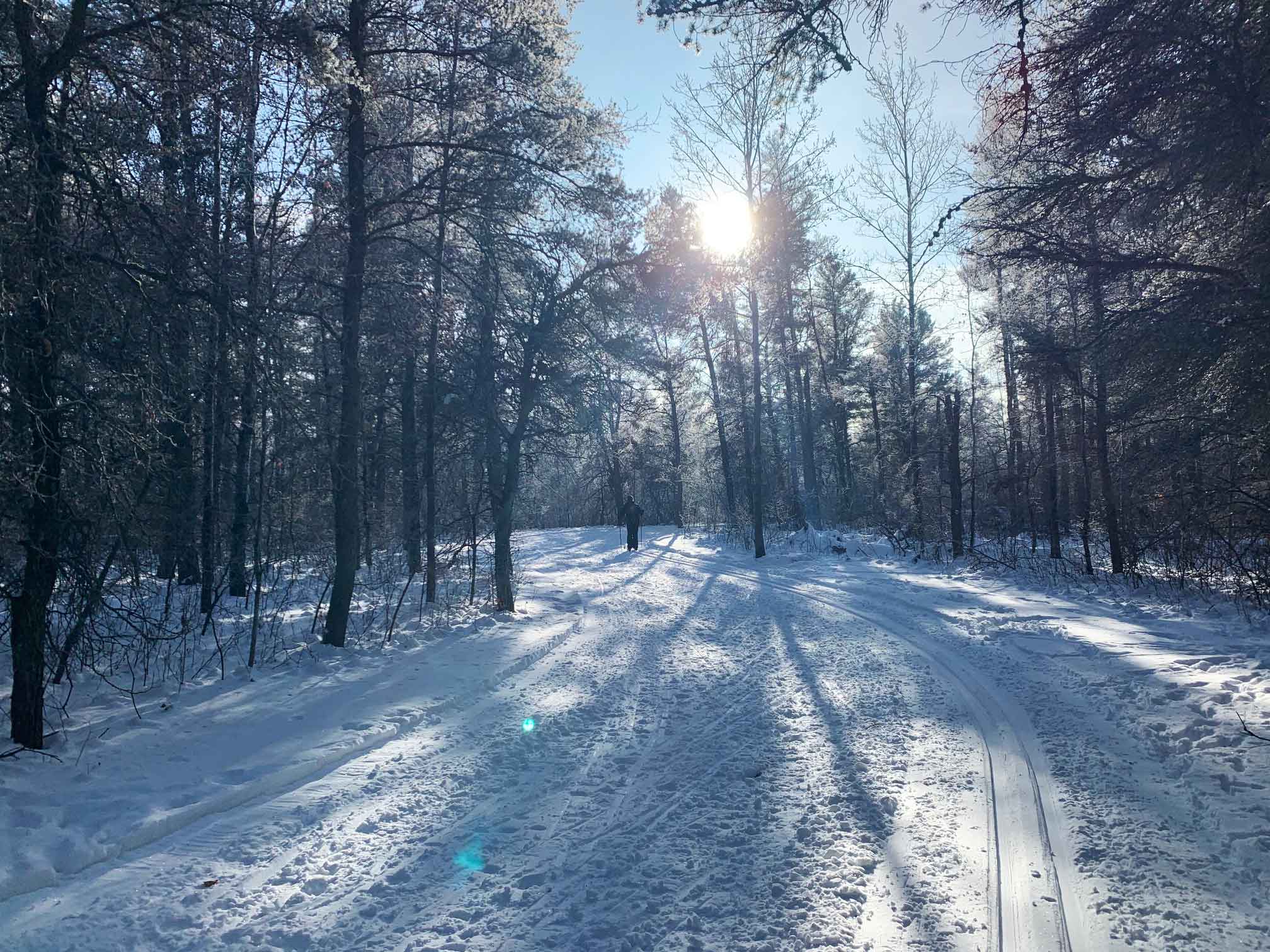
At the start of the pandemic, toilet paper was the talk of the town as store shelves with the household necessity became bare. Now the same can be said about cross-country ski equipment.
As Manitobans are finding ways to stay physically and mentally healthy — and to beat boredom in general — more and more people have been turning to outdoor activities such as cross-country skiing.
“When you live in a part of the country that we live in, finding something you enjoy doing in the winter is important, otherwise you can make yourself quite miserable all winter long,” said Karin McSherry, Executive Director of the Cross Country Ski Association of Manitoba (CCSAM).
“You can’t get bored of skiing. I like how you can always improve your technique and you can become better and better as the days, weeks and years go on.”
McSherry answered some frequently asked questions about cross-country skiing in Manitoba so that beginners know how to get started.
What Kind of Equipment Do I Need to Start Cross-Country Skiing?
While there are two techniques of cross-country skiing — classic and skate — most beginners will want to start with classic skiing, meaning you’ll be looking for a set of classic skis, boots and poles.
For the first-time ski buyer, it’s best to shop at a local ski shop rather than buying used. Buy used ski equipment only if you know exactly what you’re looking for or you trust that the person you’re buying from knows exactly what you need.
There’s a lot to consider when selecting cross-country ski equipment — for example, you have to make sure the boots you buy fit the type of binding on the ski — so it’s best to leave it to the professionals to get you set up with gear.
The CCSAM website lists local ski retailers in Manitoba, including:
- A&L Cycle, Brandon
- Alter Ego Sports, Winnipeg
- Bikes & Beyond, Winnipeg
- Country Cycle, Winkler
- Lifesport, Winnipeg
- MEC, Winnipeg
- Northern Bicycle Co., Winnipeg
- Olympia Cycle & Ski, St. Mary’s Road, Winnipeg
- Olympia Cycle & Ski, Portage Avenue, Winnipeg
- Sampson’s Sporting Life, Winnipeg
- Stream ‘n’ Wood, Brandon
- Wilderness Supply, Winnipeg
- Woodcock Cycle Works, Winnipeg
Because of the high demand for ski equipment this year, call ahead to check what’s in stock.
What Should I Wear When Cross-Country Skiing?
The key to dressing for outdoor activities in winter is layers.

Mira Oberman,
CPAWS Manitoba Communications and Engagement Manager, goes for a ski.
The layer next to your skin should be one that is going to wick moisture so your skin stays dry. That’s why it’s recommended to avoid cotton as that first layer, as it absorbs moisture and holds it next to your skin — it’s almost like wearing a wet blanket outside. Instead, choose polyester, silk or wool, which are materials that will wick moisture away from your body.
The middle layer of clothing is your insulating layer. This should be a thicker fleece or wool. On especially cold days, you may need to wear a couple middle layers or one thicker one.
The outer layer should have some degree of water protection and can act as a windbreaker. Choose something that is water-resistant, not water-proof. Wearing a water-proof layer while working out would be like wearing a plastic bag — it doesn’t allow moisture to leave your body and evaporate into the air, instead trapping the moisture inside your layers and creating a mini shower inside your clothing.
How Can I Teach Myself to Cross-Country Ski?
Usually, CCSAM offers hands-on lessons for new skiers, but since that’s not an option right now due to COVID restrictions, we have been posting useful links on our website to help folks start out.
If you know someone who cross-country skis, it can be helpful to get them to coach you, while in line with public health protocols in the province. Videos can be helpful to watch as well (check out “Classic Cross-Country Skiing for Beginners” by REI).
The motion of cross-country skiing is sort of like going for a walk or jog with a glide phase. It can take years, even the rest of your life, to perfect the technique of cross-country skiing, so don’t worry if you don’t get it at first. You can still enjoy the sport while you work on your technique.
How Young Can Children Start Skiing?
Basically whenever they can walk! They may not get the technique for a few years, but they can get the general idea of it. Some skis you can attach to kids’ winter boots. Then you just plop them in the snow, and they can start to walk in their skis, learning how to move their bodies with what feels like planks on their feet.
Should Beginners and Children Start Using Poles Right Away?
If you’re learning to ski, poles aren’t necessary right away. There’s even a short period of time where it’s better if you don’t use poles so that you don’t become reliant on them.
But eventually it is important to introduce poles, so we caution against going too long without them. In other words, starting with versus without poles isn’t too big of an issue as long as you learn both ways eventually.
At the start of every season, I like to spend some time without my poles to remind myself how to shift my weight from one ski to the other and to work on my balance. And then after about 10 minutes, I want my poles back, but it can be helpful to try a bit of both ways.
Where Can I Cross-Country Ski in Manitoba, and How Can I Find Out Trail Conditions?
The CCSAM website has a list of all the trails we know of in Manitoba as well as trail conditions. There are more than 50 listed on our site. The Facebook group A Cross Country Ski Club also posts about trail conditions.
Does the Type of Snow Affect Cross-Country Skiing?
There’s good snow, and there’s slow snow. Fresh snow is always slower than transformed snow, that is, snow that has been packed down, groomed and skied on a few times.
Trails can also be slow if the weather is cold, about -20 C or cooler, since the snow will be cold and dry. You can still ski on slow snow — it just might take more work since you won’t have as much glide.
On the other extreme, when it gets warm and snow starts to melt then freezes again, you’re basically trying to ski on ice since you have no grip, which is challenging as well, especially for a beginner.
Do You Have Any Tips For Sore Muscles After Cross-Country Skiing?
Warm up before, stretch after, take a bath with Epsom salts, go for a massage, foam roll — all the usual things to keep muscles happy.
Sore muscles are going to happen no matter what, but you can minimize it by avoiding going full out right away for an hour or longer. Instead, go only a short distance to start and build up from there as your muscles get stronger.
How Can I Safely Cross-Country Ski During a Pandemic?
Being outside is part of physical and mental health, and since skiing is already a physically distant sport, you can safely do so while following provincial COVID protocols.
It’s not recommended to ski alone, especially in remote areas, during a pandemic or otherwise. There’s always a chance you could fall over, and you may even need help getting up.
It’s also important to note that while if you can walk, you can ski, cross-country skiing is more difficult than a simple stroll in the woods. Falling is a part of skiing, so you should choose a different sport if there’s any reason why you should avoid activities that have a risk of falling (such as brittle bones).
You can of course fall while walking, but you increase your chances of doing so while skiing since you’re trying to balance on sliding skis that are about six-feet long.

